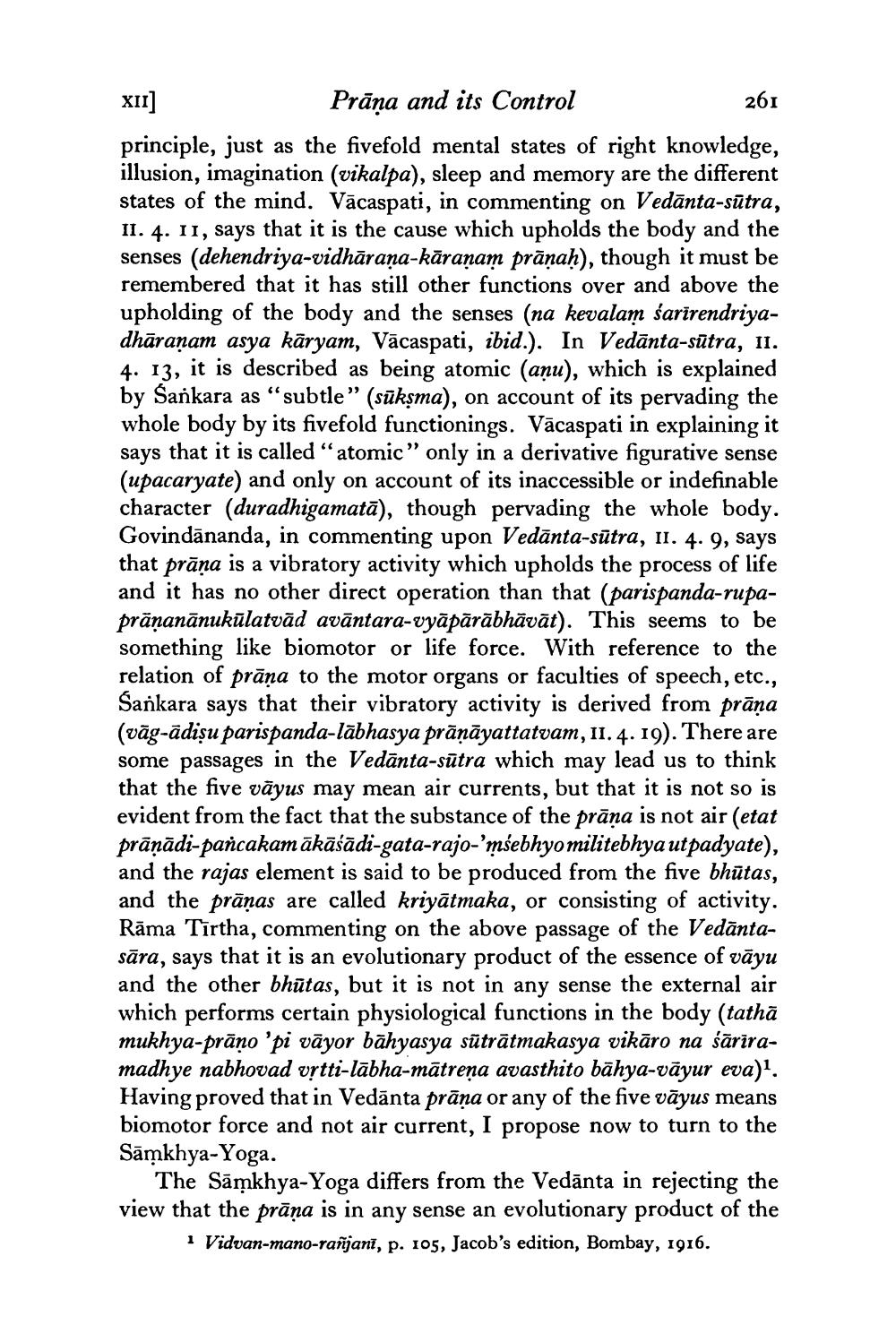________________
XII] Prāņa and its Control
261 principle, just as the fivefold mental states of right knowledge, illusion, imagination (vikalpa), sleep and memory are the different states of the mind. Vācaspati, in commenting on Vedānta-sūtra, II. 4. 11, says that it is the cause which upholds the body and the senses (dehendriya-vidhārana-kāranam prānah), though it must be remembered that it has still other functions over and above the upholding of the body and the senses (na kevalam śarīrendriyadhāraṇam asya kāryam, Vācaspati, ibid.). In Vedānta-sūtra, 11. 4. 13, it is described as being atomic (aņu), which is explained by Sankara as "subtle” (sūkşma), on account of its pervading the whole body by its fivefold functionings. Vācaspati in explaining it says that it is called "atomic” only in a derivative figurative sense (upacaryate) and only on account of its inaccessible or indefinable character (duradhigamatā), though pervading the whole body. Govindānanda, in commenting upon Vedānta-sūtra, II. 4. 9, says that prāna is a vibratory activity which upholds the process of life and it has no other direct operation than that (parispanda-rupaprāṇanānukūlatvād avāntara-vyāpārābhāvāt). This seems to be something like biomotor or life force. With reference to the relation of prāņa to the motor organs or faculties of speech, etc., Sankara says that their vibratory activity is derived from prāņa (vāg-ādişu parispanda-lābhasya prāņāyattatvam, 11.4.19). There are some passages in the Vedānta-sūtra which may lead us to think that the five vāyus may mean air currents, but that it is not so is evident from the fact that the substance of the prāņa is not air (etat prāņādi-pancakamākāśādi-gata-rajo-'msebhyo militebhya utpadyate), and the rajas element is said to be produced from the five bhūtas, and the prānas are called kriyātmaka, or consisting of activity. Rāma Tīrtha, commenting on the above passage of the Vedāntasāra, says that it is an evolutionary product of the essence of and the other bhūtas, but it is not in any sense the external air which performs certain physiological functions in the body (tathā mukhya-prāņo 'pi vāyor bāhyasya sūtrātmakasya vikāro na śāriramadhye nabhovad vrtti-lābha-mātrena avasthito bāhya-vāyur eva)'. Having proved that in Vedānta prāņa or any of the five vāyus means biomotor force and not air current, I propose now to turn to the Sāmkhya-Yoga
The Sāmkhya-Yoga differs from the Vedānta in rejecting the view that the prāna is in any sense an evolutionary product of the
1 Vidvan-mano-ranjani, p. 105, Jacob's edition, Bombay, 1916.




